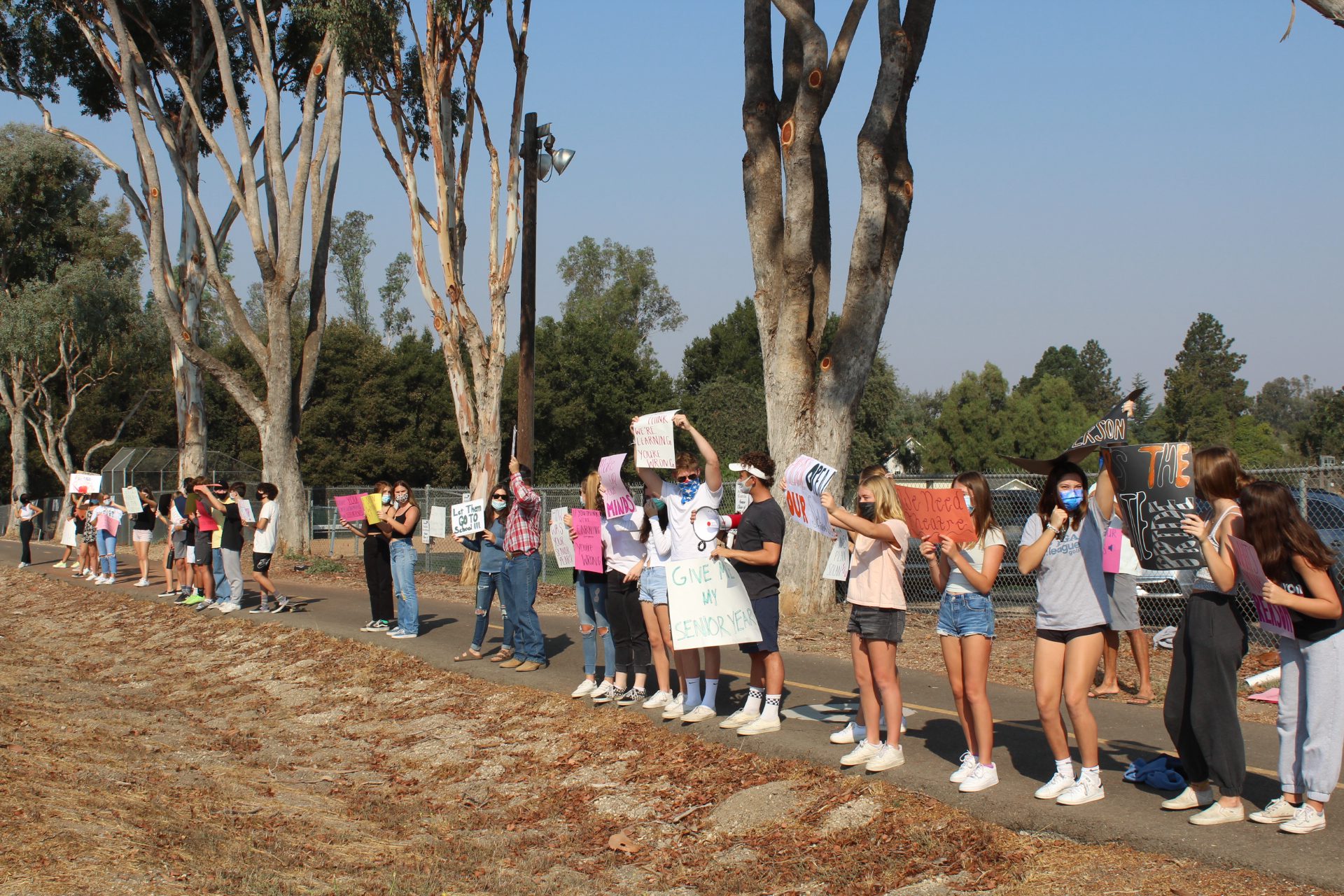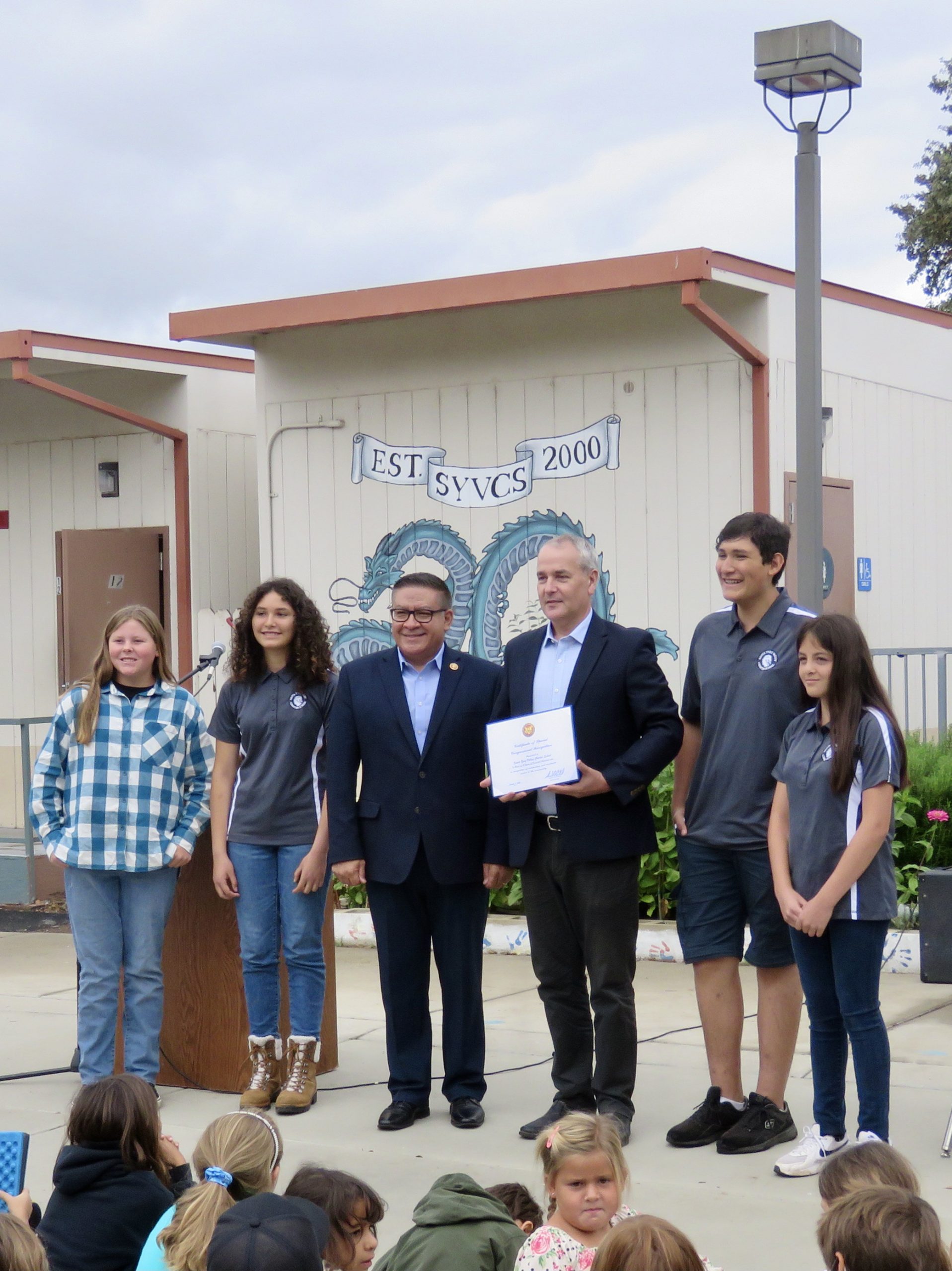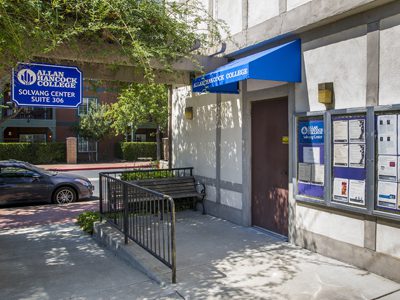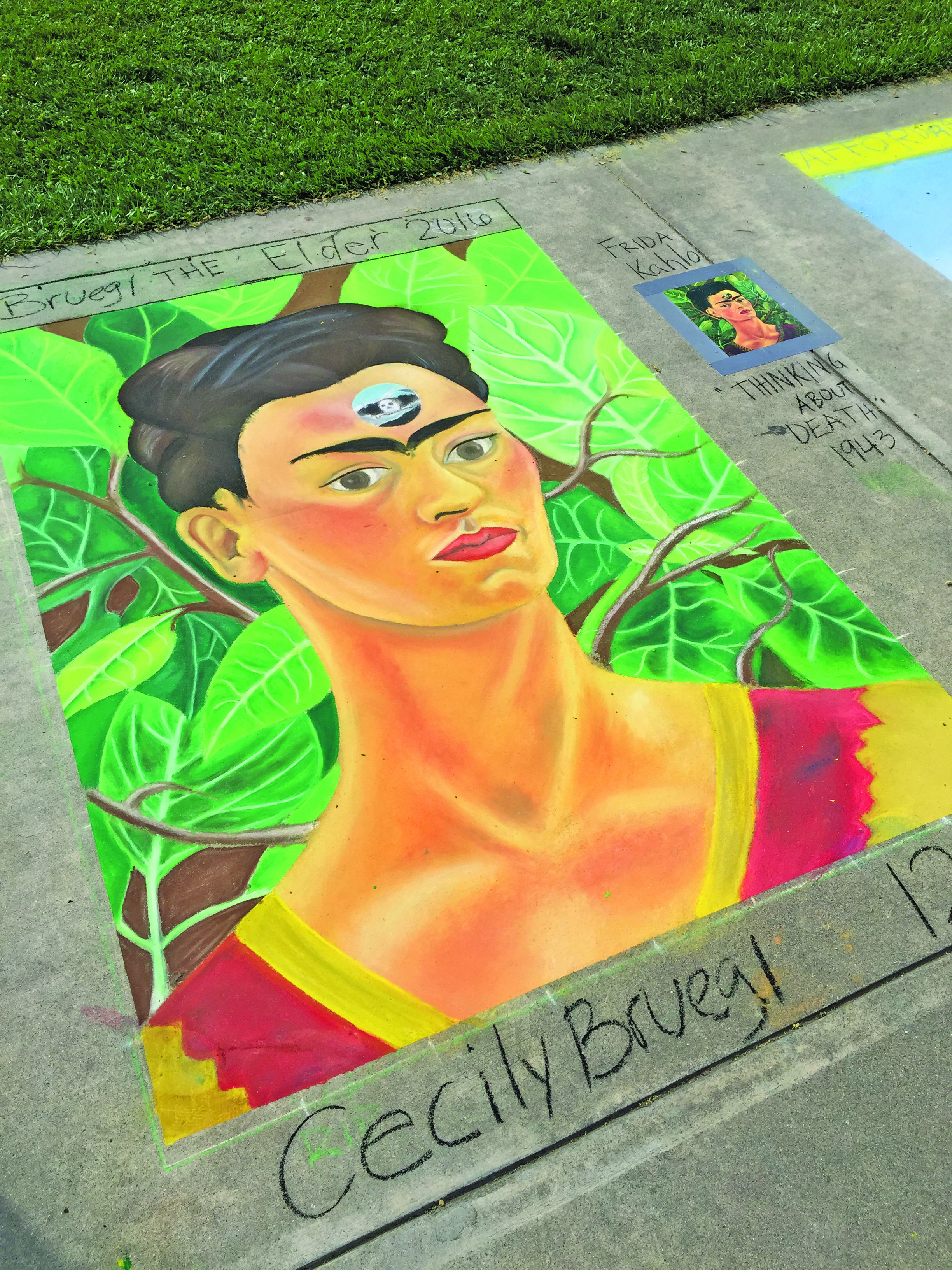By Raiza Giorgi
publisher@santaynezvalleystar.com
After the decision to delay Santa Ynez Valley Union High School reopening to a hybrid model until after the New Year, there was a campaign from students and parents who wrote letters, emailed and even a student-led protest pleading to the Board of Education to reconsider that decision.
The board decided to call another special meeting on Oct. 12, and reversed course, voting to reopen to a hybrid model as of Nov. 9. The vote was 4-1 with Tory Babcock voting no.
“I never thought I would be protesting for the right to go to school,” said Lilli Pace, a senior at Santa Ynez.
Lilli, 17, helped organize a protest on Friday, Oct. 7, with more than 50 students, parents and even some teachers supporting going back to school sooner.
“We wanted the board to hear our voices and we are upset with their choice,” she said. “Last year when we went into this it was supposed to be for two weeks and it kept going. We need to be in school and it has been really rough, a lot of students’ mental health has declined with no will to keep learning.”
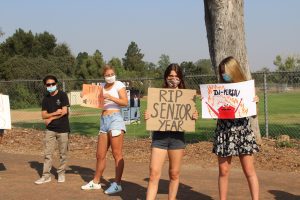
Students gather along Highway 246 in front of the school to protest the delay of on-campus learning at Santa Ynez Valley Union High School.
Photo by Raiza Giorgi
“It’s a mixture of emotions to be online. No one likes being on the computer and it’s difficult and upsetting,” Lilli added. “We want the board to understand and know this isn’t working. No one is really learning. Even though the hybrid model isn’t ideal, at least we will have some connection with our teachers and classmates.”
Now that the decision to reopen is moved to early November, teachers will have one cohort on campus, one cohort distance learning from home, and another cohort solely learning from home.
Of the 26 speakers at the special meeting, the majority were in favor of reopening sooner and the board heard the cries from the students saying their mental health was at stake. Those who were opposed reopening were several of the teaching staff.
“I am currently teaching from home to limit my exposure to people, but I worry I cannot visit my parents after being with students all day,” said science teacher Jen Croll. “So Thanksgiving I will be staying home due to worries I could get them sick.”
Teacher Jeff Reck said he was worried if one student presented symptoms of COVID-19 it would lead to immediate quarantine for two weeks.
“Attempting the fragile hybrid while maneuvering through the holidays and finals could prove disastrous for many students,” he wrote in. “This is why some colleges are ending the first semester at Thanksgiving break.”
Teacher Cassie Cathcart said transitioning earlier equates to four in-person meetings for students and keeping the hybrid start would be better for this huge transition.
“The entire nation is grappling with mental health during this pandemic, perhaps we need more advertising on mental wellness center,” Cathcart wrote. “Many of our students suffering mental health, transitioning now is ill-advised.”
During the discussion, Babcock pointed out that all the other area high schools opted to delay returning to campus until after the New Year, to which board member John Baeke said that Santa Ynez is the lowest case count of the county, and while bigger schools are opting to stay in distance-learning mode, Santa Ynez has the benefit of being a small rural school that can be at the forefront of and take advantage of what the county is allowing.
Baeke is correct the valley has had the least amount of COVID-19 cases according to Santa Barbara County Public Health. As of Oct. 12, there were 168 confirmed positive cases and 153 of those have fully recovered.
Superintendent Scott Cory stated the decision-making process is challenging and the input he’s received is divided into two groups of reopening ASAP and the other to wait.
“Both sides are passionate and present the scientific evidence to support their side to the point of life or death for the board to choose one or the other,” Cory said.
He presented the hybrid model again as he said there has been some confusion on what the students and parents can expect. Cory stated the first thing to expect is it won’t be “business as usual”.
The students are divided into three cohorts with one cohort on campus in the class, and the other cohort at home listening to the same instruction so the teacher doesn’t have to repeat and can move forward. The third cohort will be distance learning from home solely.
The full presentation can be viewed on the district’s website at https://go.boarddocs.com/ca/syvuhsd/Board.nsf/Public.
The board also discussed the first reading of the new Independent Study (IS) Program which will be led by teacher Victoria Martinez, to meet those with medical needs or personal reasons to go to an independent model.
Cory stated the decision for an ISP is a good fiscal reason as it will allow students to do independent study and still be allowed to participate in afterschool activities and sports.
Martinez was hired specifically to create the IS program which will likely get started at the beginning of the next quarter, with a certain number of classes offered. The classes range from English, math, economics, U.S. history, world cultures, American government and others.
“We are launching this as a first step and get our feet into this world of independent study and ways to receive an alternative education,” Martinez said.
There will be another reading of the IS program at the Oct. 20 regular board meeting.
To view the entire meeting visit the district’s YouTube channel at www.youtube.com/watch?v=y6wn7_nG_Z4.

